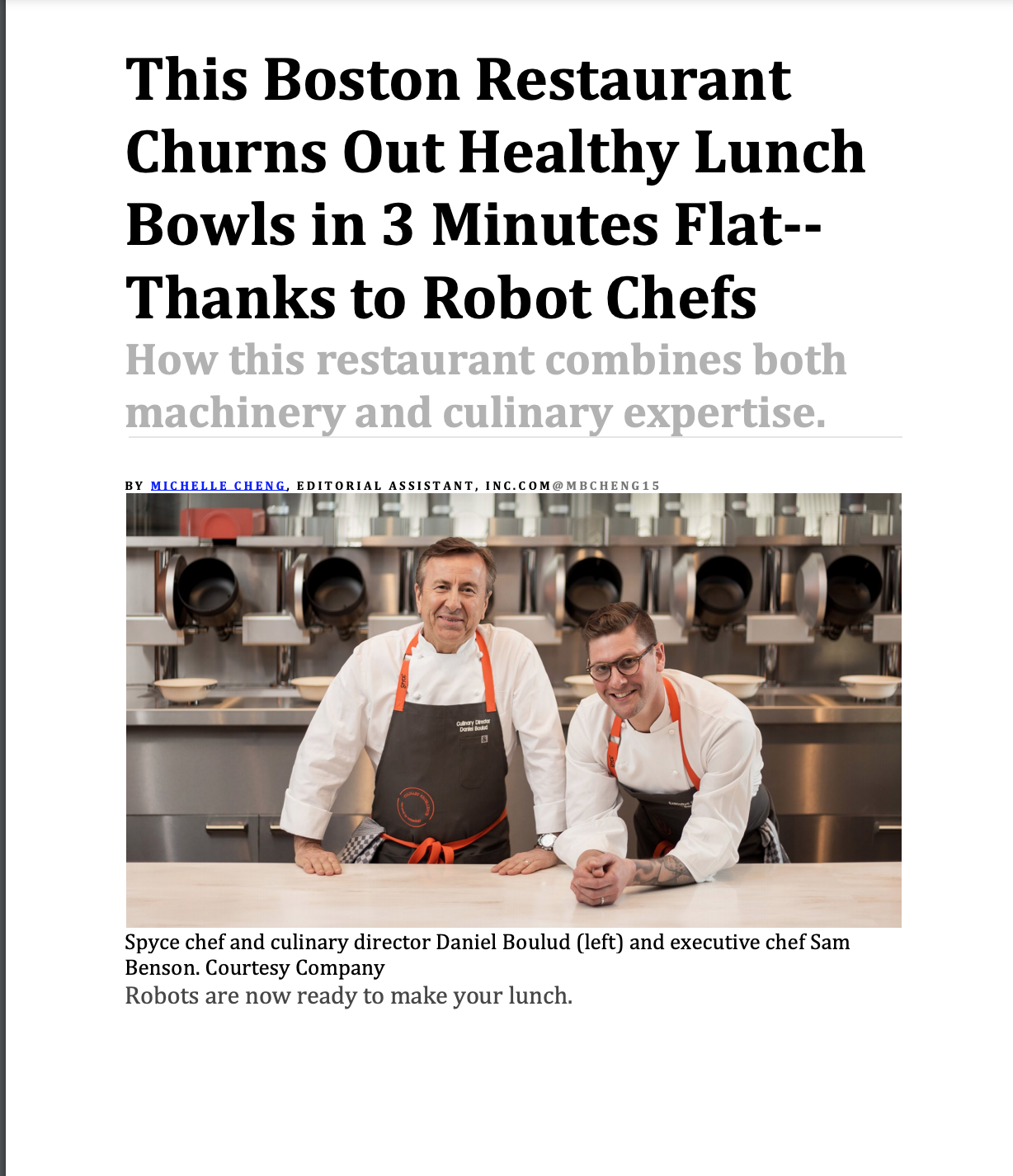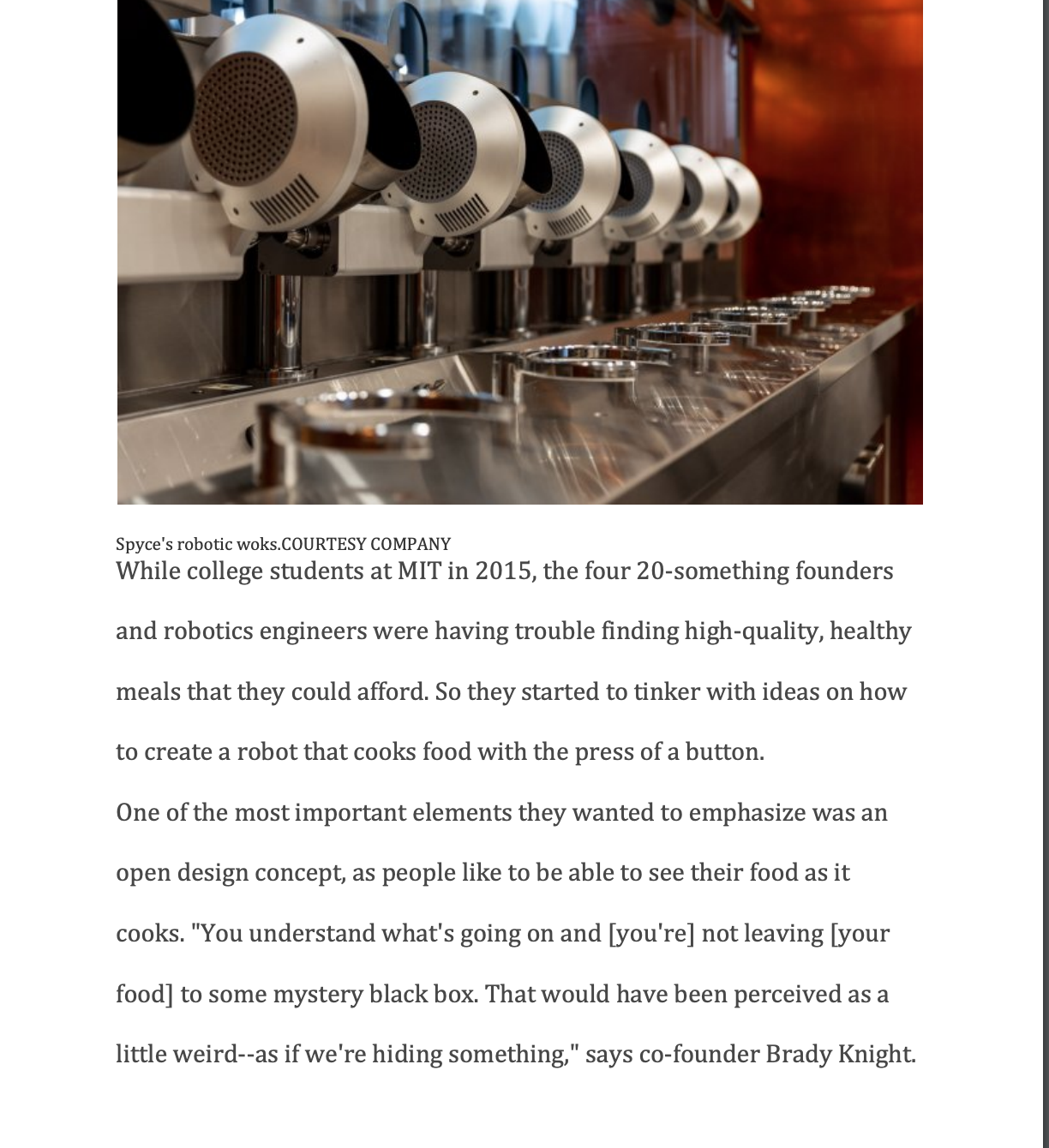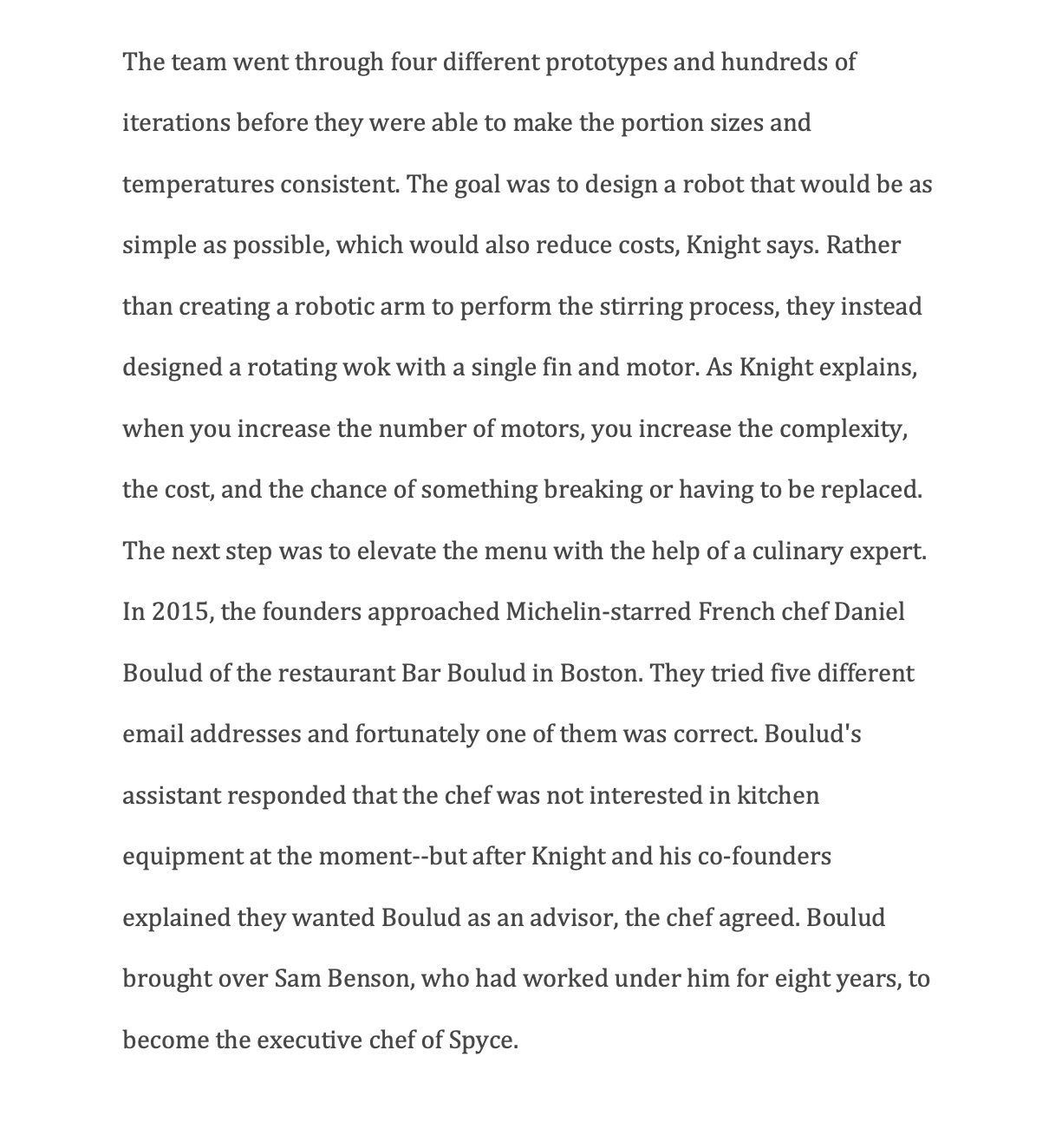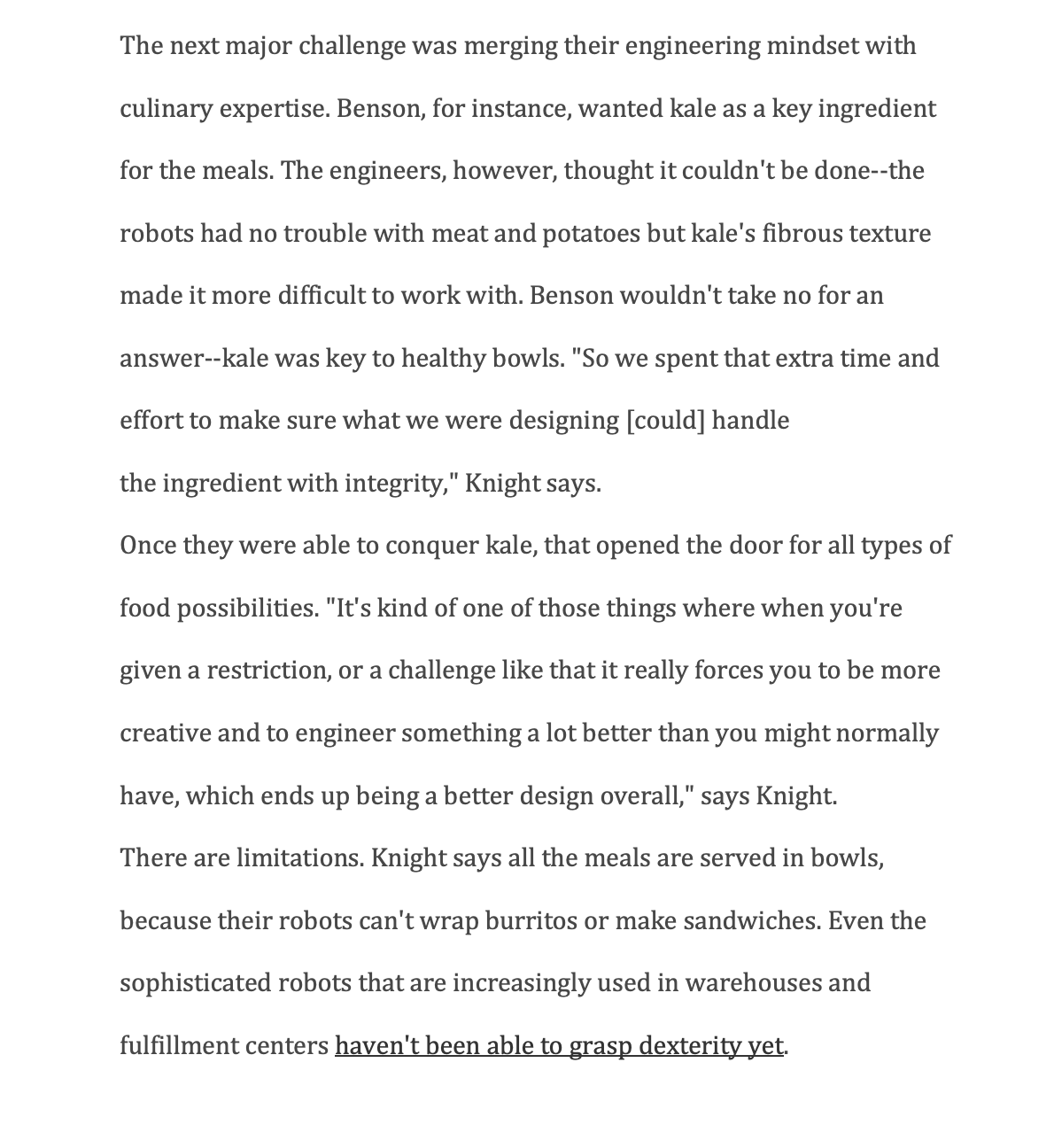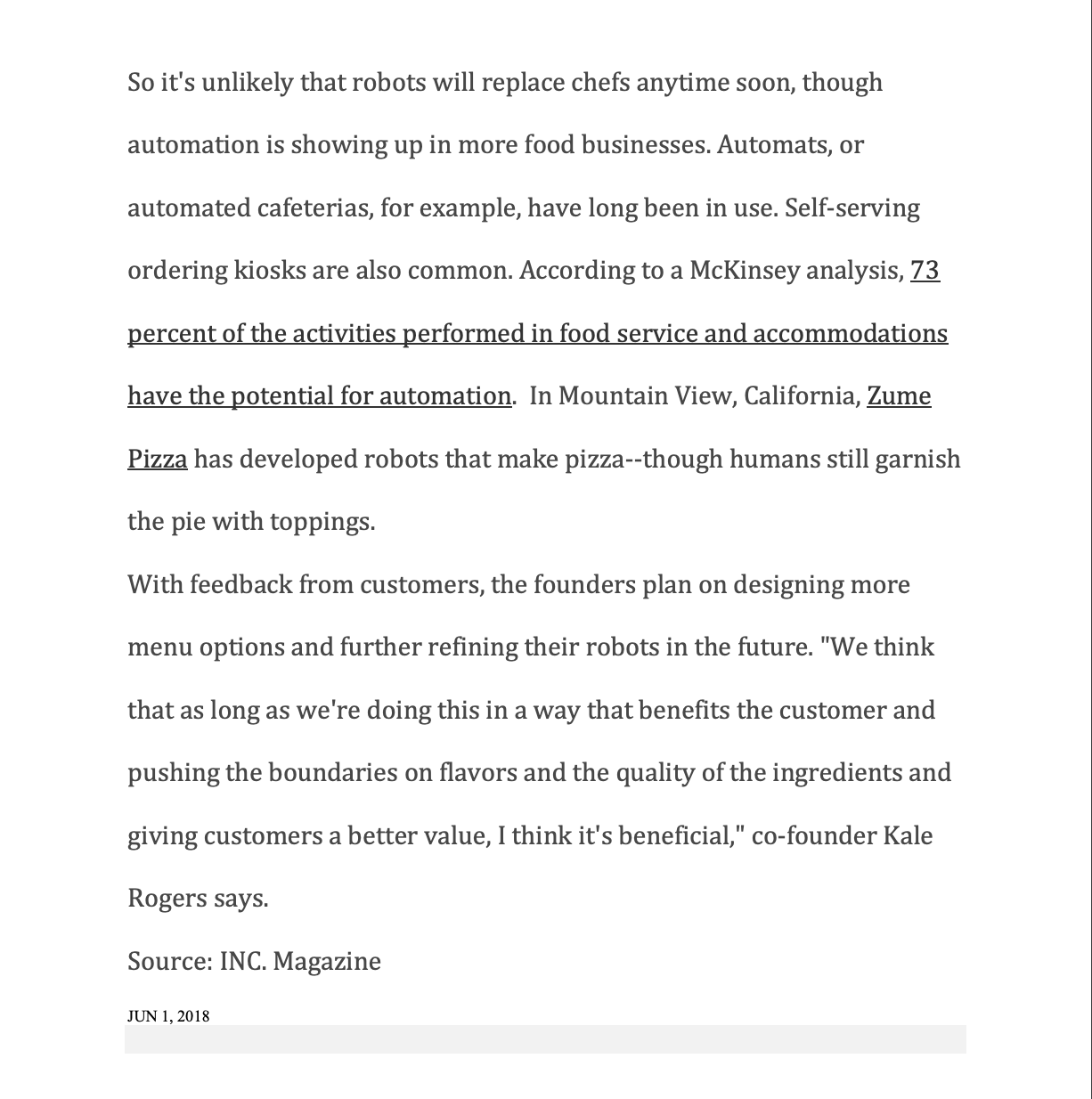MGMT 1P93 - FALL 2020 - INDIVIDUAL ASSIGNMENT # 6
To do the assignment, need to read the attached article titled "This Boston Restaurant Churns Out Healthy Lunch Bowls in 3 Minutes Flat." Answer the following question:
According to your Business: A Changing World textbook, there are five basic ways that manufacturers and service providers differ in their production and operations management procedures. Identify and describe these five basic differences. After reading the Inc. Magazine article, comment on how Spyce restaurant is eliminating some of these differences, if any.
Ensure your assignment is no longer than two pages. Your assignment should consist of a total of four or five paragraphs as follows: an Introduction paragraph, one or two paragraphs explaining the five differences between manufacturers and service providers, one paragraph that explains how you think Spyce Restaurant is eliminating these differences, and a Conclusion paragraph.
This Boston Restaurant Churns Out Healthy Lunch Bowls in 3 Minutes Flat-- Thanks to Robot Chefs How this restaurant combines both machinery and culinary expertise. BY MICHELLE CHENG, EDITORIAL ASSISTANT, INC. COM@MBCHENG15 Spyce chef and culinary director Daniel Boulud (left) and executive chef Sam Benson. Courtesy Company Robots are now ready to make your lunch.Located in downtown Boston, Spyce is a fast-casual restaurant with a menu full of trendy lunch bowls with Thai, Moroccan, Indian, and other international inuences. What it doesn't have are human chefs. Instead, automated woks cook each dish in under three minutes. According to the company, reduced labor costs are what allow the restaurant to charge $7.50 for each bowl. When you walk into the restaurant, a human guide is available to help answer customers' questions on the menu or the cooking process. Customers can choose from seven bowl options [they can be customized to accommodate vegetarian, pescetarian, gluten-free, and vegan diets] and place their orders and pay at kiosks. Then, you can watch your food as it's cooked. "Runners," which are small orange boxes, slide up and down, dispensing ingredients (which are cut and prepared off-site) like vegetables, chicken, potatoes, and rice into one of six cylindrical woks mounted on the wall. The woks do all of the sauting automatically. Afterwards, a human being adds the nishing touches to your meal. Spyce's robotic woks.COU RTESY COMPANY While college students at MIT in 2015, the four 20-something founders and robotics engineers were having trouble nding high-quality, healthy meals that they could afford. So they started to tinker with ideas on how to create a robot that cooks food with the press of a button. One of the most important elements they wanted to emphasize was an open design concept, as people like to be able to see their food as it cooks. "You understand what's going on and [you're] not leaving [your food] to some mystery black box. That would have been perceived as a little weird~as if we're hiding something," says co-founder Brady Knight. The team went through four different prototypes and hundreds of iterations before they were able to make the portion sizes and temperatures consistent. The goal was to design a robot that would be as simple as possible, which would also reduce costs, Knight says. Rather than creating a robotic arm to perform the stirring process, they instead designed a rotating wok with a single fin and motor. As Knight explains, when you increase the number of motors, you increase the complexity, the cost, and the chance of something breaking or having to be replaced. The next step was to elevate the menu with the help of a culinary expert. In 2015, the founders approached Michelin-starred French chef Daniel Boulud of the restaurant Bar Boulud in Boston. They tried ve different email addresses and fortunately one of them was correct. Boulud's assistant responded that the chef was not interested in kitchen equipment at the moment--but after Knight and his co-founders explained they wanted Boulud as an advisor, the chef agreed. Boulud brought over Sam Benson, who had worked under him for eight years, to become the executive chef of Spyce. The next major challenge was merging their engineering mindset with culinary expertise. Benson, for instance, wanted kale as a key ingredient for the meals. The engineers, however, thought it couldn't be done--the robots had no trouble with meat and potatoes but kale's brous texture made it more difcult to work with. Benson wouldn't take no for an answer--kale was key to healthy bowls. "So we spent that extra time and effort to make sure what we were designing [could] handle the ingredient with integrity," Knight says. Once they were able to conquer kale, that opened the door for all types of food possibilities. "It's kind of one of those things where when you're given a restriction, or a challenge like that it really forces you to be more creative and to engineer something a lot better than you might normally have, which ends up being a better design overall," says Knight. There are limitations. Knight says all the meals are served in bowls, because their robots can't wrap burritos or make sandwiches. Even the sophisticated robots that are increasingly used in warehouses and fulllment centers haven't been able to grasp dexterity yet. So it's unlikely that robots will replace chefs anytime soon, though automation is showing up in more food businesses. Automats, or automated cafeterias, for example, have long been in use. Self-serving ordering kiosks are also common. According to a McKinsey analysis, 73 percent of the activities performed in food service and accommodations have the potential for automation. In Mountain View, California, Zume m has developed robots that make pizza--though humans still garnish the pie with toppings. With feedback from customers, the founders plan on designing more menu options and further rening their robots in the future. "We think that as long as we're doing this in a way that benets the customer and pushing the boundaries on avors and the quality of the ingredients and giving customers a better value, I think it's beneficial," co-founder Kale Rogers says. Source: INC. Magazine JUN 1,2018
